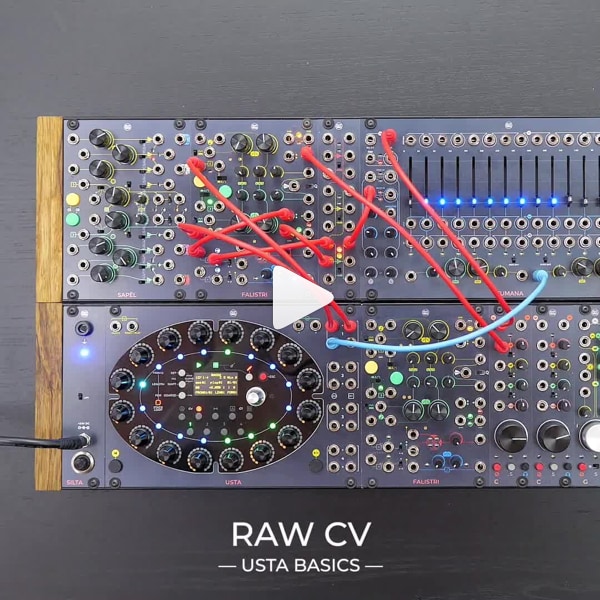Loading cart contents...
- resources /
- techniques /
- Raw CV
Music is not just about notes! For this reason, USTA features a second layer for control voltages, which by default outputs ‘Raw’ CVs, i.e., unquantized. (This setting can be changed, but for now, let’s stick to that.) In this patch, we demonstrate how CVB can add expressiveness and dynamics to a series of musical events by controlling the scan position of the FUMANA.
INGREDIENTS
- 1 USTA
- 1 FALISTRI
- 1 FUMANA
- 1 333
- CGM
DIRECTIONS
- Set up FALISTRI in the Synth Voice configuration (steps 1-6).
- Patch the green bipolar (or unipolar) output to the Dual Cascaded Frequency Divider input.
- Set the DCFD’s first output to ‘bipolar’.
- Patch the green EOR and the first DCFD out to the 333.
- Attenuate the 333 input by 6dB.
- Patch the 333 output to FUMANA’s main input.
- Patch FUMANA’s ALL output to the CGM Channel.
- Set FUMANA’s Scan Gain knob to 3 o’clock.
- Set the Scan Position knob to 10 o’clock.
- Set the Scan Width knob to 2 o’clock.
- Patch FALISTRI’s yellow bipolar output to the CGM Channel’s VCA CV input.
- Patch the GTA of USTA’s track 1 to FALISTRI’s yellow CV/Gate input.
- Patch the CVA of the same track to FALISTRI’s green V/oct.
- Patch the CVB out to FUMANA’s Scan Position CV input, and set the attenuverter fully clockwise.
- Play your sequence, select the CVB layer and increase the value of different stages.
